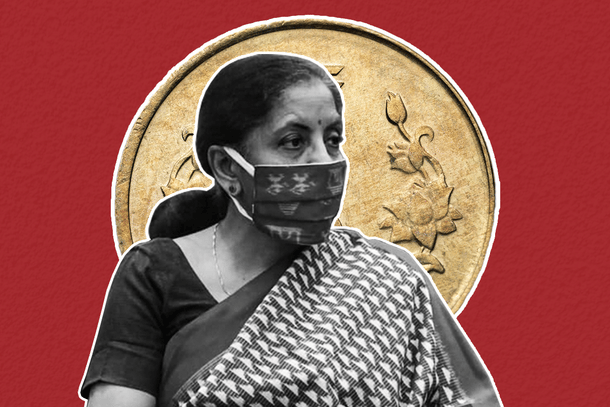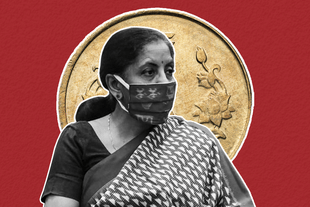Business
Here’s Why Modi Government’s Rs 65,000 Crore Fertiliser Subsidy May Be The Best Decision The Industry Hoped For
M R Subramani
Nov 13, 2020, 02:26 PM | Updated 02:19 PM IST
Save & read from anywhere!
Bookmark stories for easy access on any device or the Swarajya app.


Yesterday (12 November), Union Finance Minister Nirmala Sitharaman announced an additional allocation of Rs 65,000 crore as fertiliser subsidy as part of the third instalment of Atmanirbhar Bharat Abhiyan.
Sitharaman told a media conference: "Rs 65,000 crore (is) being provided to ensure adequate availability of fertilisers to farmers to enable timely availability of fertilisers in the upcoming crop season."
A major reason for the announcement of the additional allocation, the Finance Minister said, was to ensure that farmers in the country need not worry about fertiliser shortage.
The allocation comes on top of Rs 71,000 crore Sitharaman allocated for fertiliser subsidy in the budget for the current fiscal. This now takes the total allocation for fertiliser subsidy to Rs 1.36 lakh crore, and making up from the Rs 9,000 crore shortfall when the initial allocation was made.
The Finance Minister made a valid point in her briefing, explaining how fertiliser consumption is estimated to increase to 67.3 million tonnes (mt) this crop year (July-June) against 57.1 mt last season.
A favourable monsoon which resulted in 27 per cent excess than normal rainfall this year had resulted in higher sowing of kharif crops. The area under rabi also seems to be rising with coverage of all crops up nearly 16 per cent as on 6 November this year.
“Fertiliser usage, mainly urea, has increased. In particular, usage of urea has increased by 30 to 40 per cent,” said P Chengal Reddy, president of Hyderabad-based Federation of Farmers Association.
“ Farmers go for cheaper fertilisers. Small and marginal farmers only know urea and so, its consumption was up,” Reddy told Swarajya.
He said fertiliser and pesticide consumption have increased in states such as Telangana and Andhra Pradesh besides a few other states which had experienced heavy rains in the last few weeks.
Business Standard reported that urea sales were pegged at 15.52 million tonnes during April-August this year, up almost 25 per cent compared with the same period a year ago.
Offtake of other fertilisers such as di-ammonium phosphate and nitrogen-phosphorus-potassium was over 55 per cent higher compared with last year.
Reuters quoted Fertilizer Association of India Director-General Satish Chander as saying that it was the best announcement the industry could have hoped for.
According to rating agency ICRA, the Union government requires 1.28 lakh crore towards fertiliser subsidy, including Rs 48,000 crore arrears pending last fiscal.
Urea and other fertilisers are sold at a maximum retail price (MRP) fixed by the Union government. The difference between production costs, which are higher than the MRP, and the selling price is reimbursed to manufacturers as subsidy by it.
ICRA senior vice-president K Ravichandran was quoted saying that the subsidy backlog last fiscal had resulted in higher working capital borrowing and a significant interest outgo for the fertiliser industry.
It weakened the credit profile of the fertiliser companies and their profitability.
Also, had the allocation not been made now, then fertiliser subsidies arrears would have mounted to nearly Rs 60,000 crore, weakening the sector further.
The allocation, which hopefully will result in clearing the arrears of the fertiliser companies, could result in no arrears to the companies. This will strengthen the industry's bottomline.
On the other hand, the additional allocation can result in the Narendra Modi government directly transferring fertiliser subsidies to the farmers, a demand made by organisations such as Federation of Farmers Association.
“The government should directly transfer fertiliser subsidy to the farmers since it takes a longer time for fertiliser companies to get the arrears,” Reddy said, adding that many fertiliser companies had set up offices in Delhi only to address the subsidies arrears issue.
Sitharaman’s allocation is also significant since the Department of Fertilizer was placed in “B” Category for the new expenditure management following the onset of novel coronavirus pandemic. This means it can spend only 80 per cent of the allocation made for the current fiscal.
The Finance Minister's additional allocation saw most fertiliser stocks gain on National Stock Exchange and Bombay Stock Exchange today.
M.R. Subramani is Executive Editor, Swarajya. He tweets @mrsubramani





